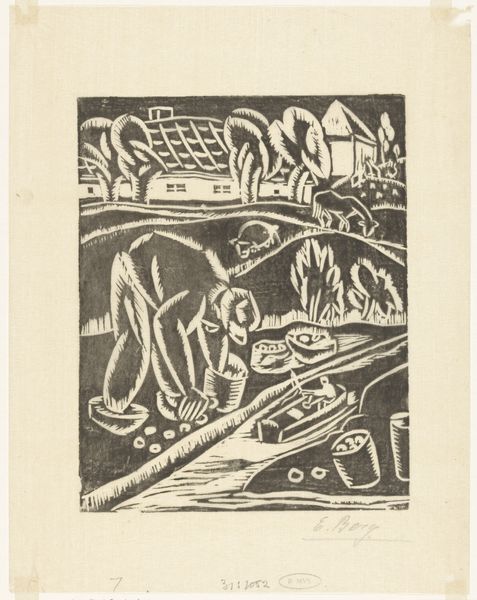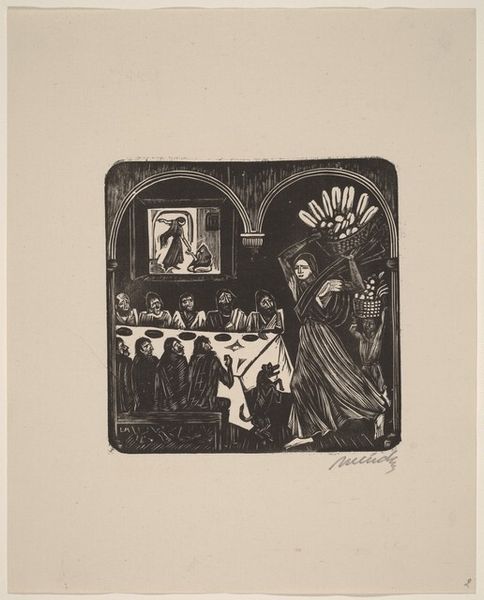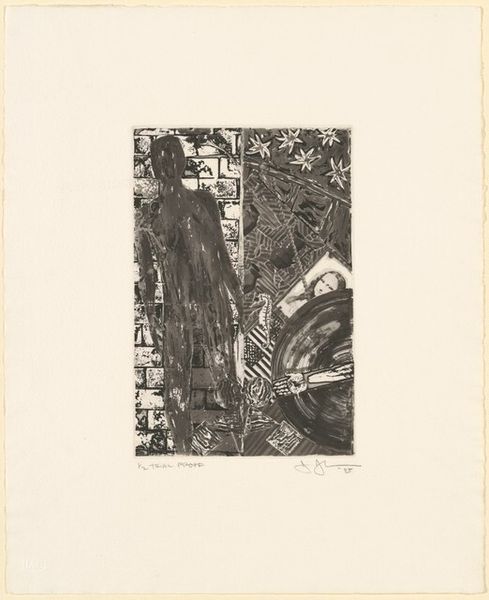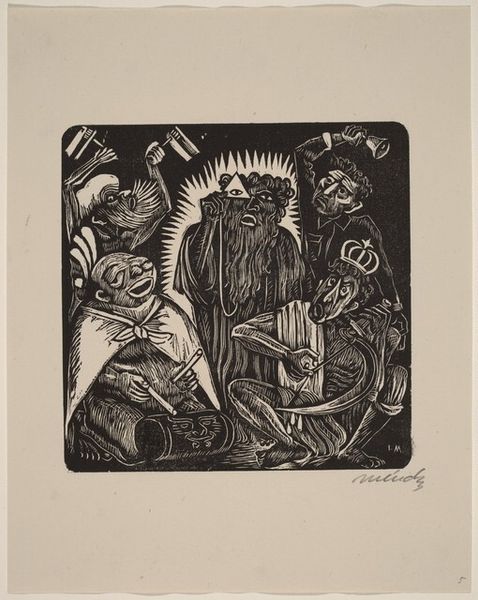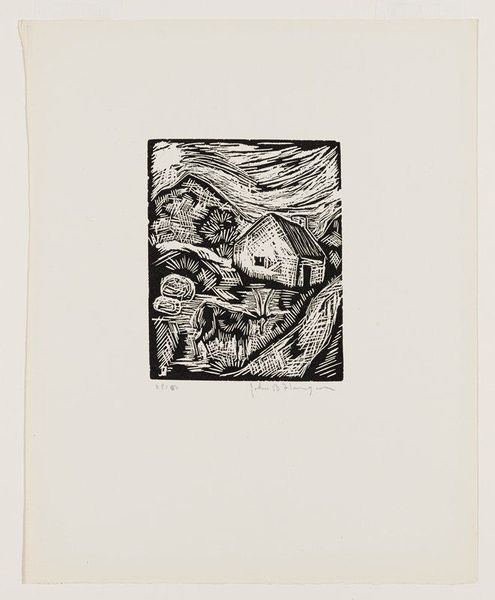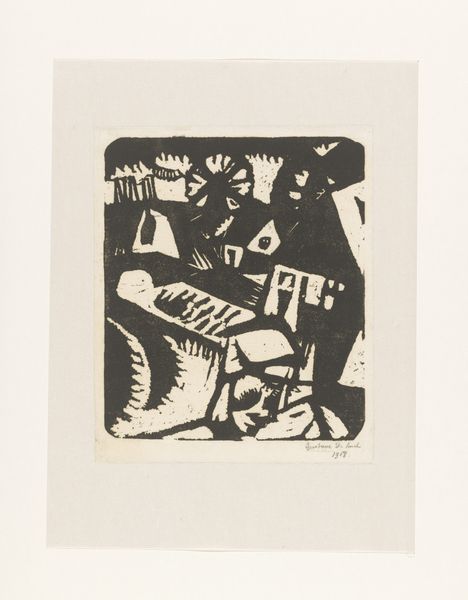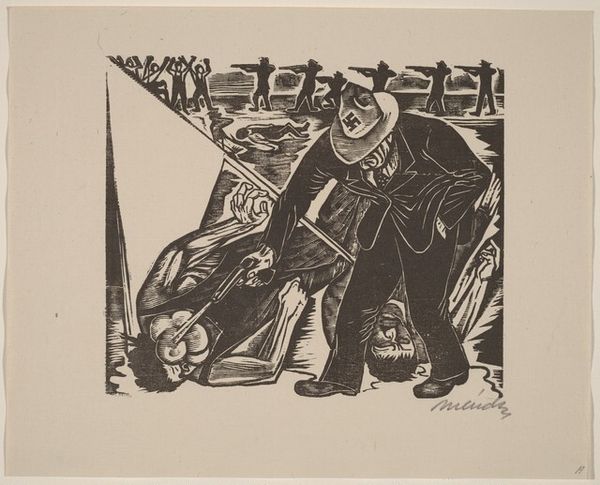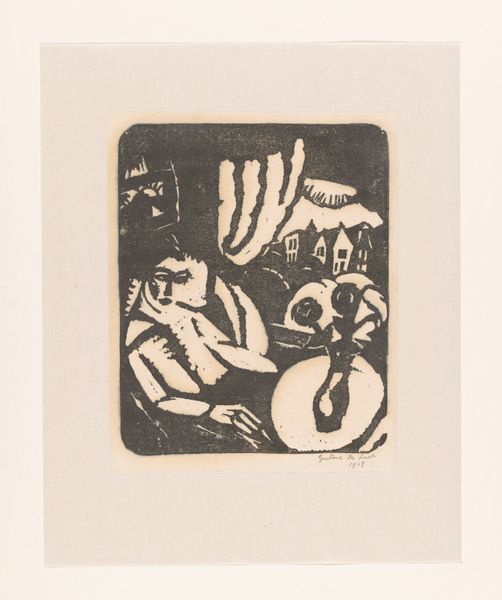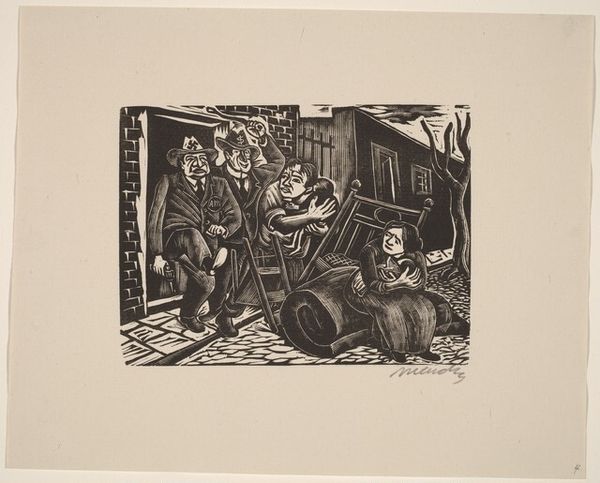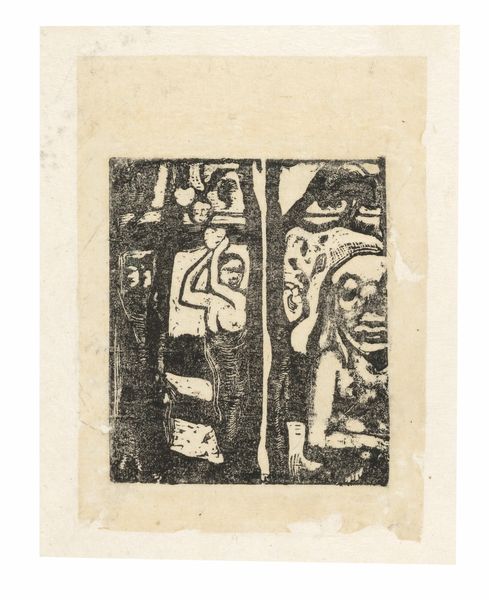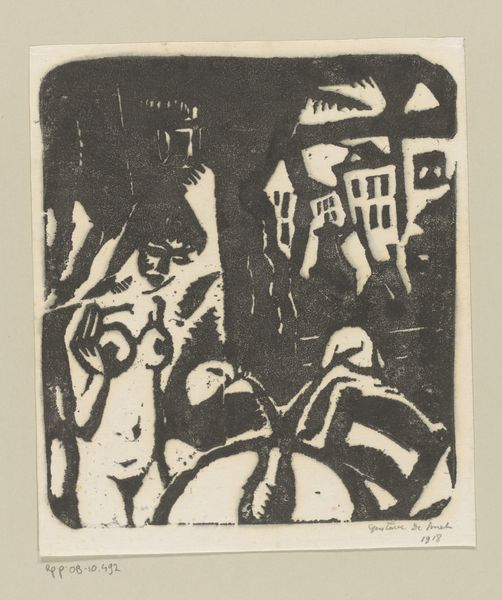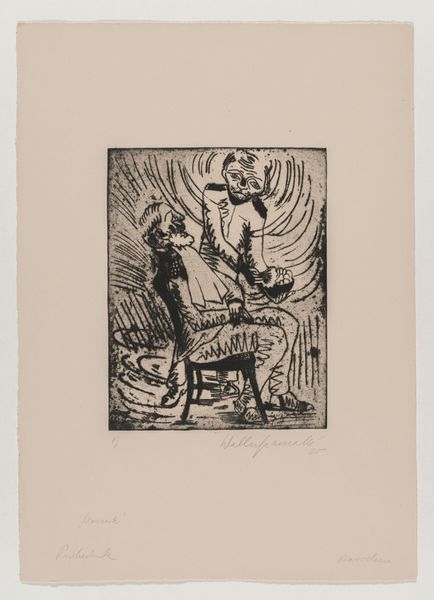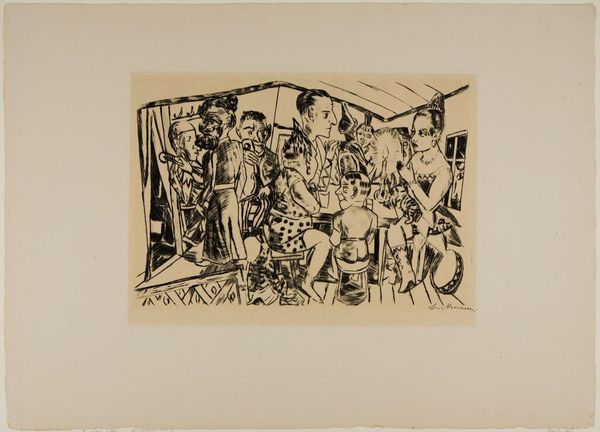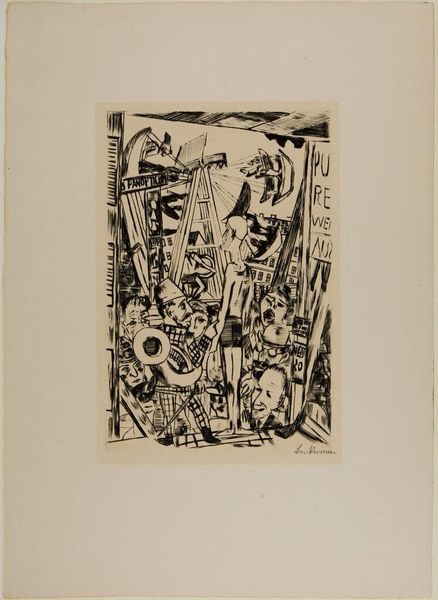
graphic-art, print, woodcut
#
graphic-art
#
narrative-art
# print
#
figuration
#
woodcut
#
mexican-muralism
Copyright: National Gallery of Art: CC0 1.0
Editor: This is Leopoldo Méndez’s woodcut, "Soldier", created in 1943. There's such a starkness to it, with all those contrasting black and white areas, a whole story unfolding. What story do you see in this piece? Curator: It speaks, doesn’t it? It’s like a frame plucked from a much longer narrative. I think Mendez, here, evokes the everyday anxieties of wartime, but it also reminds me of old family photos. There is a somber feeling, as if those left behind know of a looming emptiness. Don’t you find the details in the crowd almost… ghostly? Editor: Now that you point it out, there is something haunting in their expressions. I initially read them as caricatures. What's with the woodcut medium here? Does that add to the sombre impact? Curator: Precisely! Woodcut has a long history as a medium of protest and resistance. It’s graphic, immediate, and accessible. Think about its relationship to muralism too, also a form of art meant for public consumption. The texture is rough-hewn; there are no soft edges. I see that boldness of line echoing the gravity of the situation. Did the work challenge your notion of 'fine' art? Editor: Absolutely. I typically consider something like oil on canvas when I hear “fine art,” but seeing the artistic potential of woodcut is amazing. I’m left contemplating the potential of less conventional materials to carry profound weight. Curator: Precisely the point! Isn’t it wonderful how a piece like this, with its stark beauty and loaded history, forces us to re-evaluate not just art itself but our role within history?
Comments
No comments
Be the first to comment and join the conversation on the ultimate creative platform.
